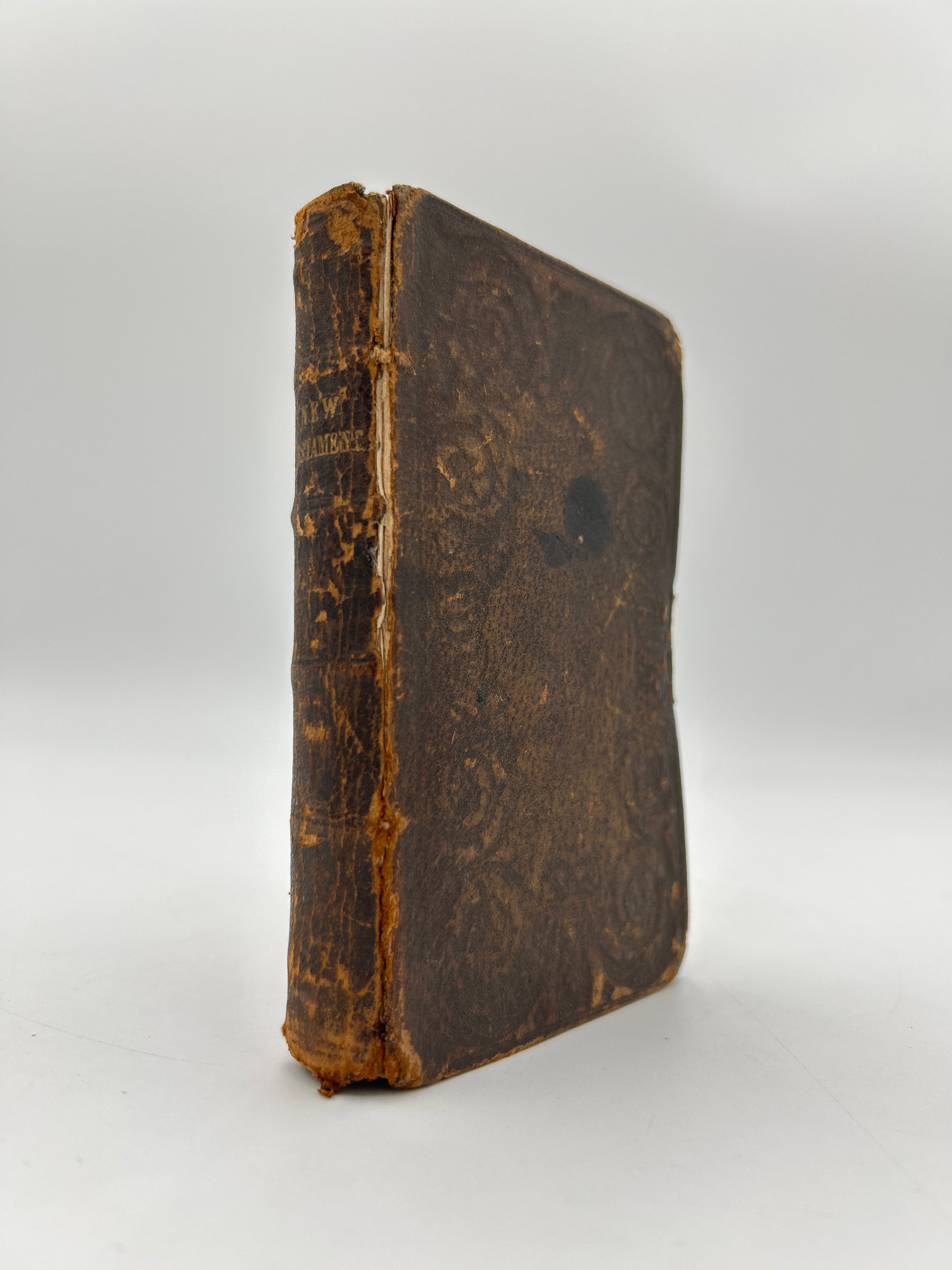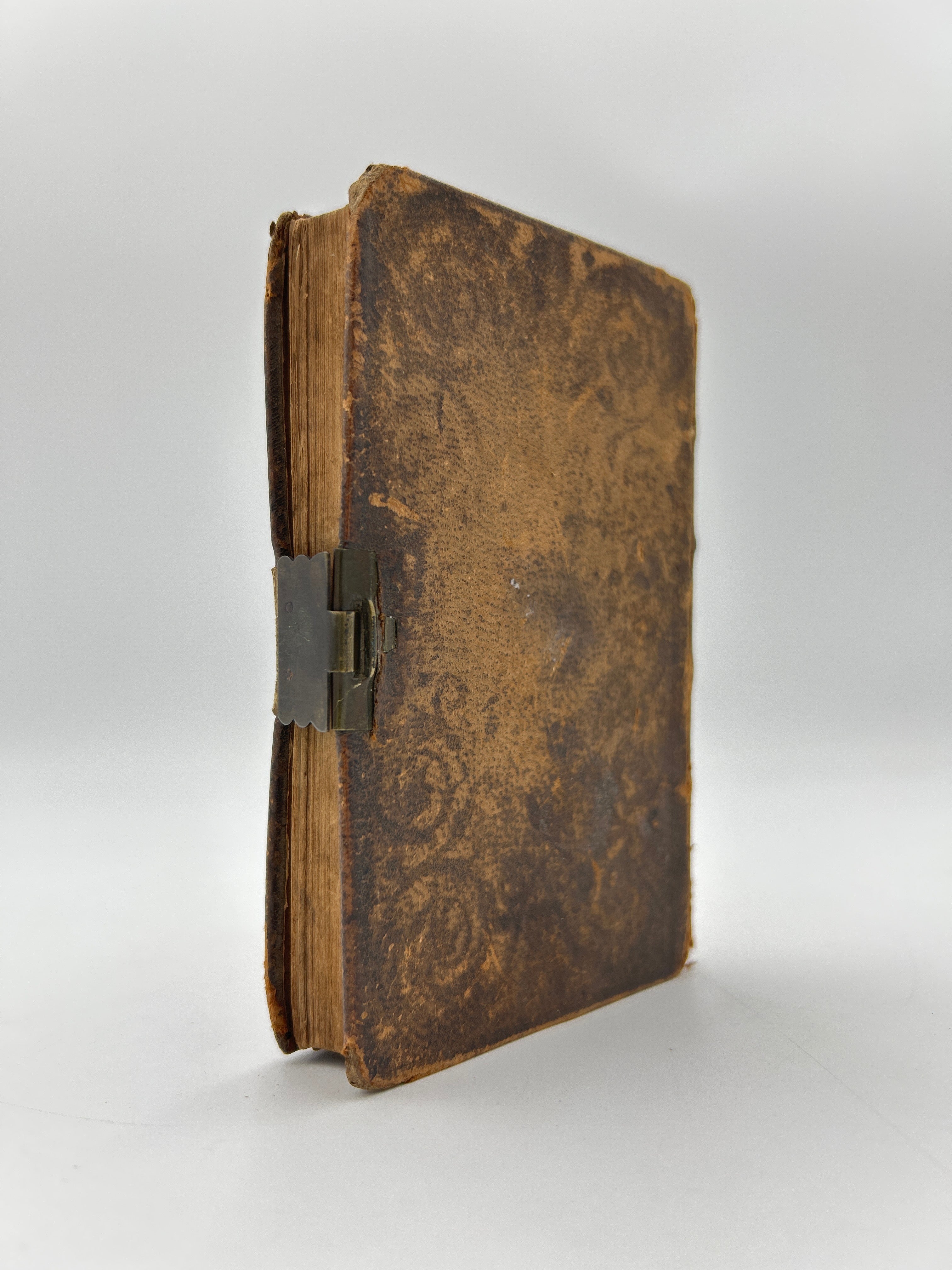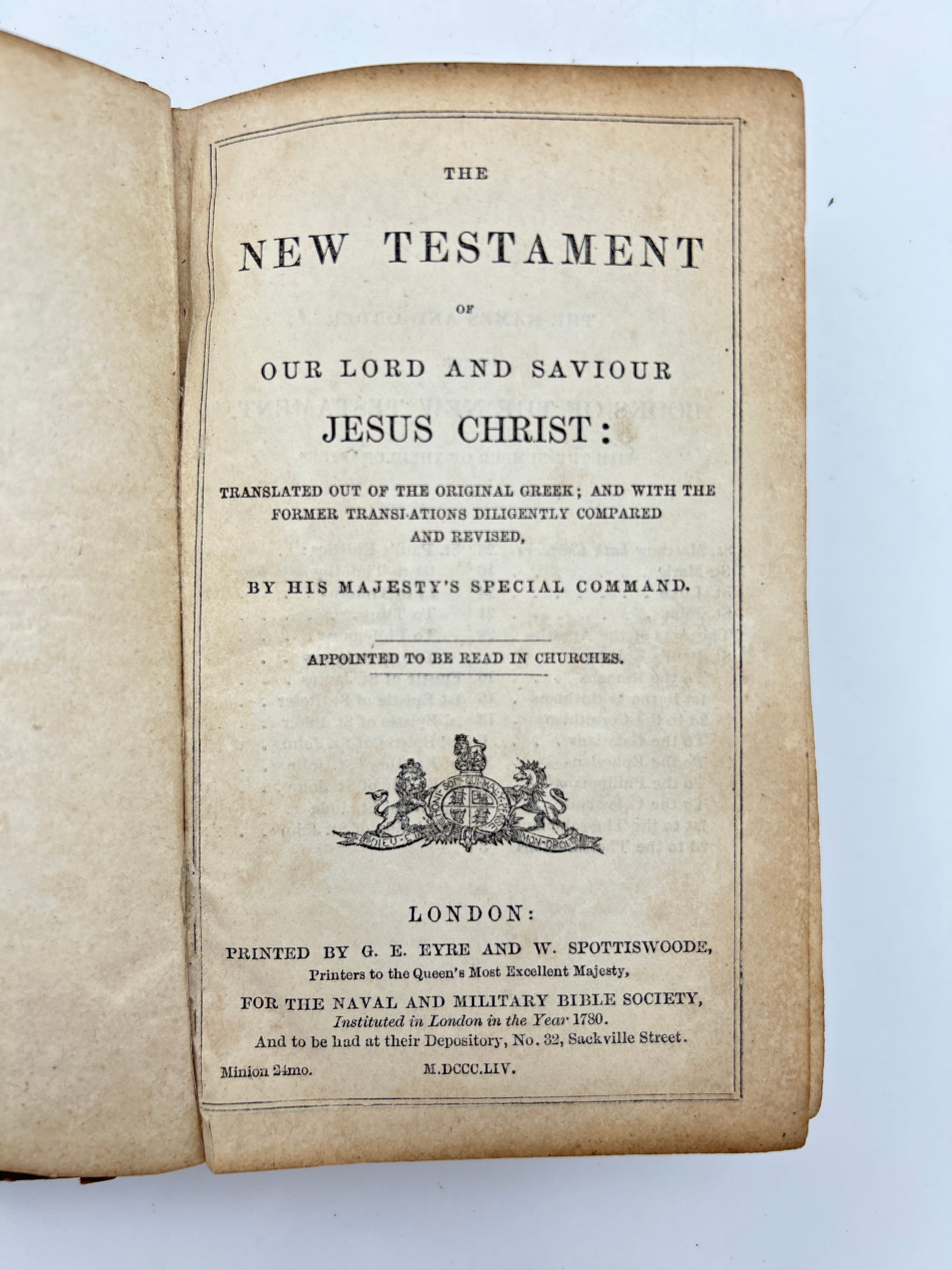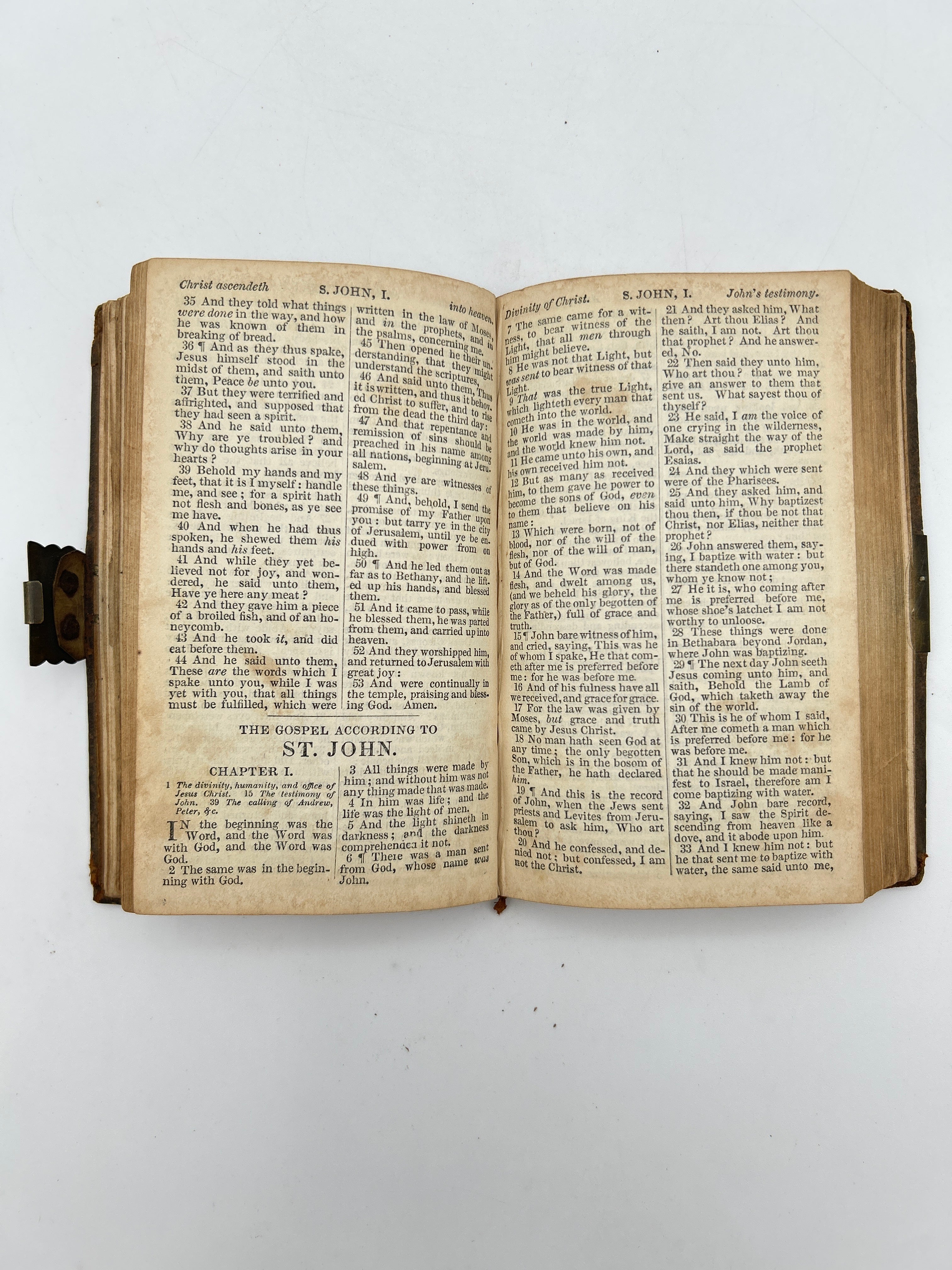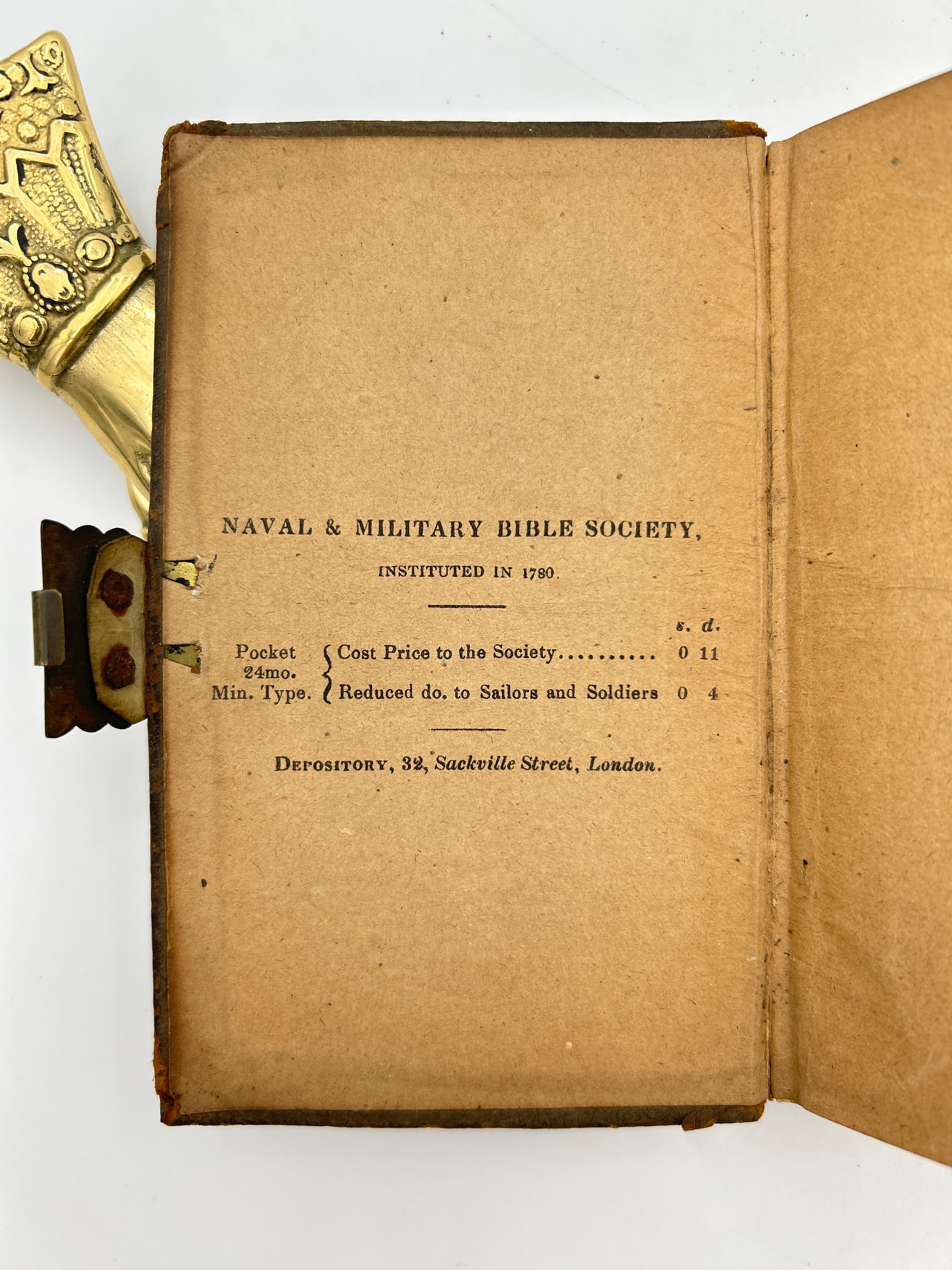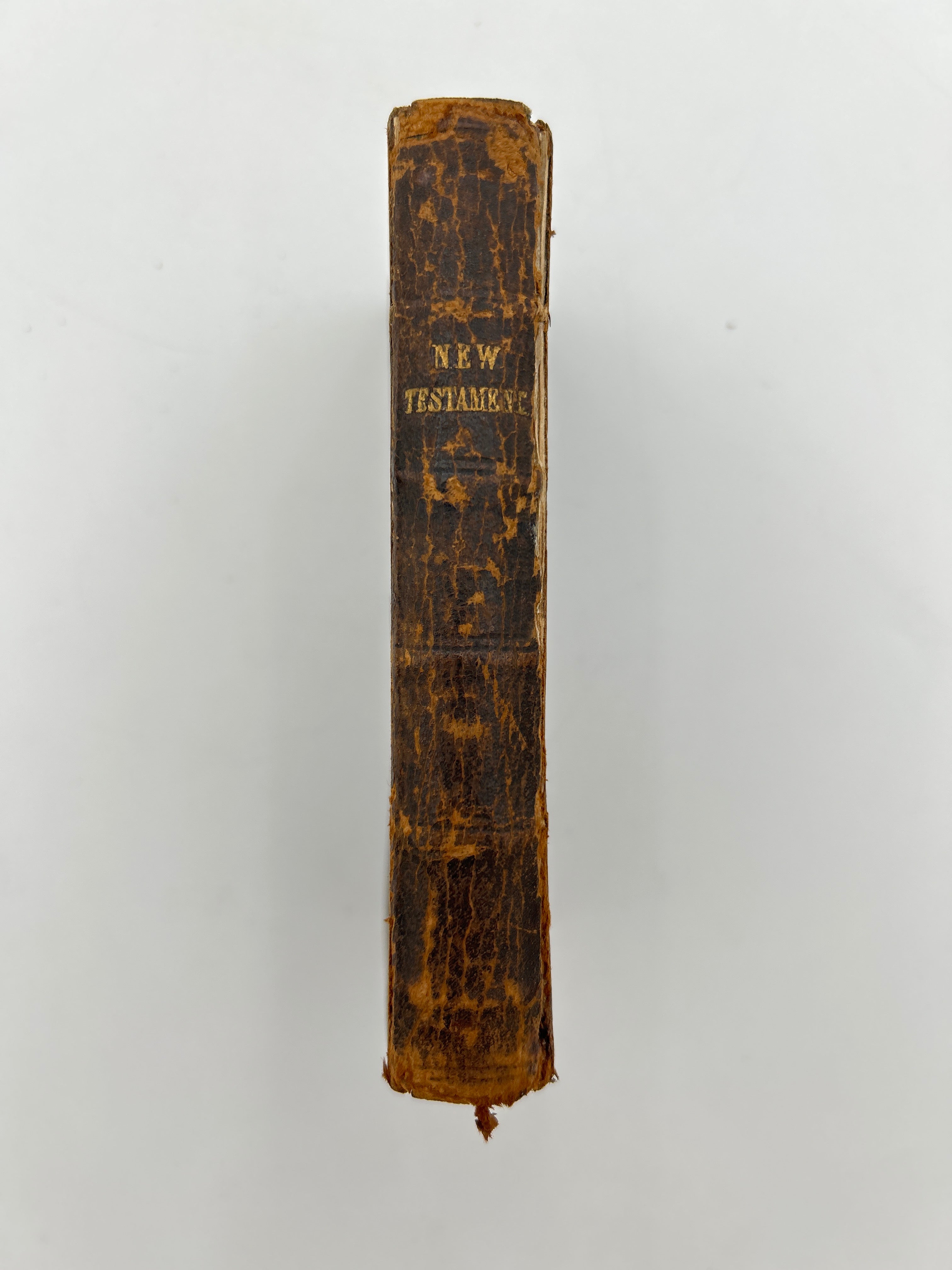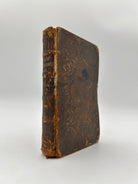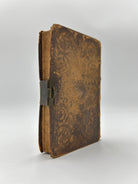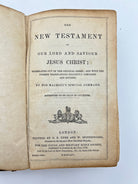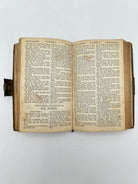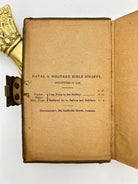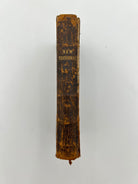Naval and Military Bible Society Bible
Couldn't load pickup availability
5B New Testament in Pocket Size. Naval and Military Bible Society; London. 1854
Notes
The New Testament is the second part of the Christian Bible, focusing on the life, teachings, death, and resurrection of Jesus Christ, as well as the early development of the Christian Church. It consists of 27 books, including the four Gospels (Matthew, Mark, Luke, and John), which recount Jesus’ life and ministry; the Acts of the Apostles, which details the spread of Christianity after Jesus' ascension; various letters (epistles) written by early Christian leaders like Paul to different communities; and the apocalyptic Book of Revelation. Written in the first century AD, primarily in Greek, the New Testament serves as the foundational text for Christian theology and practice.
The Naval and Military Bible Society, founded in 1780 in the United Kingdom, is one of the oldest organizations dedicated to distributing Bibles to members of the armed forces. Originally established to provide sailors and soldiers with access to the Scriptures, the society recognized the unique spiritual needs of those serving in often challenging and dangerous conditions. Over the centuries, it has supplied compact, durable editions of the Bible—sometimes in waterproof or camouflaged covers—designed for ease of use in the field. The Society has worked closely with chaplains and military personnel, offering spiritual support through the distribution of Scripture and Christian literature. Its mission continues today, with a focus on reaching service members and their families around the world.
In the 1850s, brass closures—also known as clasps—were a common feature on many finely bound books, especially Bibles and prayer books. These closures served both practical and decorative purposes. Practically, they helped keep the book tightly closed, protecting the delicate pages from dust, moisture, and warping, which was particularly important for books that were frequently handled or stored in less controlled environments. Aesthetically, brass clasps added an element of elegance and craftsmanship, often complementing ornate leather covers with gold tooling or embossing. Their presence reflected the value placed on books during the Victorian era, not just as sources of knowledge or devotion, but also as treasured personal and family heirlooms.
Description
Brown leather binding with original brass clasp closure still functioning. Gilt lettering to spine. Faded swirls embossed on upper board. General wear to binding and creasing to spine. All corners bumped. Naval and Military Bible Society Bible.
